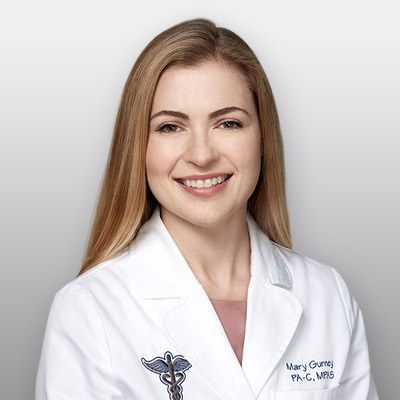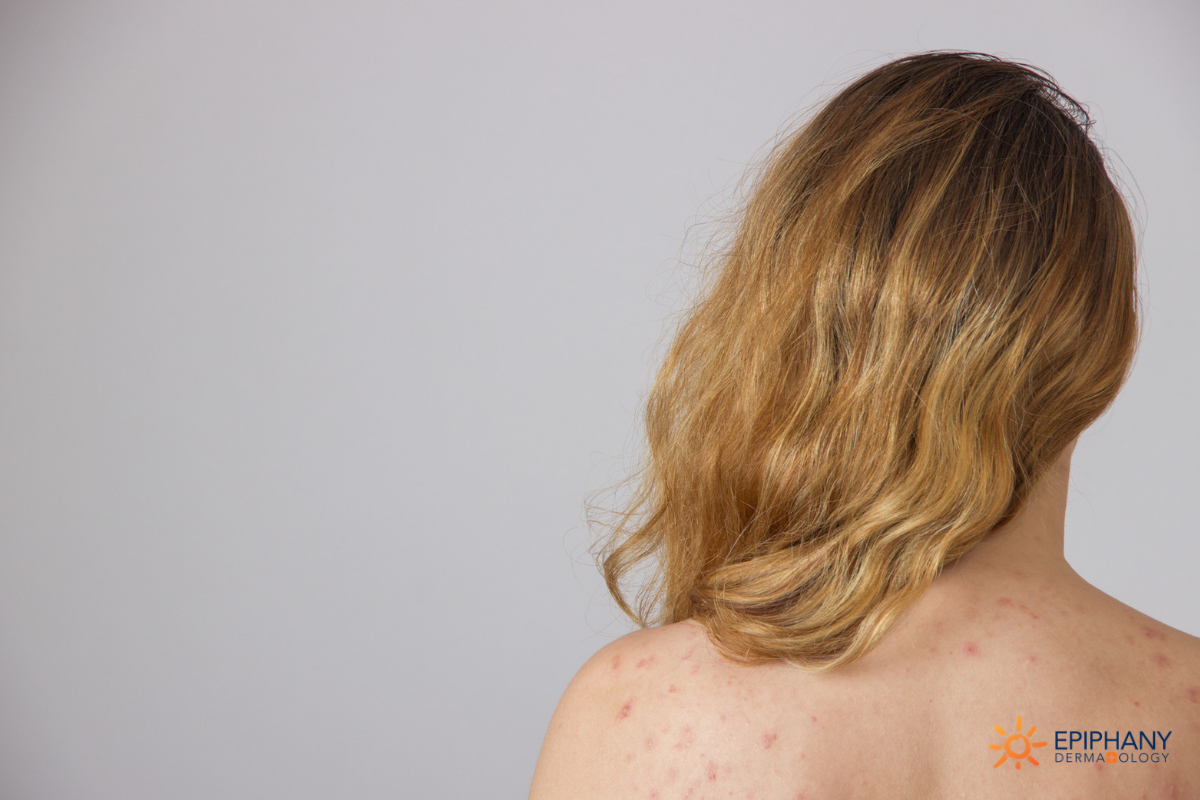Acne may only be skin deep, but its effects are not.
We all like to look our best, but for teenagers, it’s even more important. In an age where pictures travel fast and haunt us forever (thanks, social media), breakouts often get in the way of teens putting their best face forward.
So teens should just wash their face regularly, right?
Of course… but teen skin care isn’t always that easy. Unfortunately, over-the-counter skin care products often aren’t enough to knock out breakouts for teens. And when those pimples never seem to disappear, it can be hard on a teenager.
Acne affects self-esteem. And treating teenage acne isn’t just about clear skin; it’s about the mental and emotional health of your teenager.
How Teenage Acne Affects Mental Health
See, teenage acne doesn’t just affect your child’s physical appearance. For a teen, it often impacts mental and emotional health. Depression is an ever-growing problem in the 10-24 age group. In fact, it affects 20% of adolescents.
That’s 1 out of every 5.
Depression doesn’t have one single definitive cause. We’re not saying that acne is the leading cause of depression, but it is a contributing factor to low self-esteem and negative body image, which both increase the risk of depression.
If there’s something we can do to help teens have higher self-esteem and to promote a positive self-image, we want to do it. Clear skin isn’t the only solution, but it can make a big difference.
Teenage Acne: Cosmetic or Medical?
Very rarely do we consider acne a purely cosmetic condition. Acne affects your mental and emotional well-being too. In fact, even insurance companies typically consider it a medical condition. It’s not just about looking good or feeling pretty. It’s about self-esteem.
In severe cases, teenage acne can also be painful. Because of that, we treat acne as a medical, not a cosmetic, condition.
How to Treat Teenage Acne
Acne isn’t a simple condition. It’s a combination of three different skin problems:
- Clogged pores
- Surface bacteria
- Overproduction of oil (especially high during teenage years)
The oil and clogged pores create a breeding ground for bacteria. The surface bacteria then get into the clogged pores and create inflammation inside the pore, resulting in a pimple.
When we treat acne, we have to treat all three issues. That’s why we prescribe multiple medications for daily use. Typically, we use a cream to unclog the pores, another cream to kill the surface bacteria, and a low-dose oral antibiotic to calm the inflammation inside the pore where the pimples are trying to form.
Some people feel like these treatment regimens are cumbersome — after all, it’s a lot of medication. But with acne treatment, there’s a specific point to each medication and you need each of the products.
On your first visit for acne, we evaluate:
- Where are the breakouts?
- How severe are the breakouts?
- Are there a lot of clogged pores?
- Do you have sensitive skin?
As we take these factors into consideration, we can select the appropriate topical medications and antibiotics.
Are Acne Antibiotics Harmful?
Some people hesitate to start an antibiotic because they fear it creates antibacterial resistance in the body. When we prescribe antibiotics for acne inflammation, we’re not trying to change the flora of the body and kill the good bacteria.
We prescribe antibiotics to treat acne in a sub-microbial dose — it has an anti-inflammatory effect without killing the good bacteria. Also, the low dosage reduces the risk of side effects (including upset stomach and photo-sensitivity). These special formulations of antibiotics give an extended release of this low-dose medication into the bloodstream so you get the anti-inflammatory effect without dealing with the negative side effects.
People with mild acne may be able to skip the oral medication and use combination topical products that have agents to both kill the bacteria and unclog pores. However, for more severe cases, an oral antibiotic is a necessary step in clearing the skin.
What About Accutane for Teenage Acne?
We always begin acne treatment with topical creams and antibiotics — but they don’t work for everyone. For people with more severe acne, or for those who don’t respond to conventional treatments, we have more aggressive treatment options.
The pill that used to go by the name “Accutane” is related to one of the commonly known topicals used to unclog pores, called Retin-A. In fact, the generic name for Retin-A is tretinoin, and the generic name for Accutane is isotretinoin. Isotretinoin is basically an oral form of Retin-A.
Remember, one of the most important steps of acne treatment is unclogging pores. For some people, the topical medications aren’t enough. They need an oral medication to treat the pores from the inside out. That’s why we use isotretinoin — it structurally changes the oil glands in your skin, helping keep your pores clear permanently. It’s the most effective medication we have for treating acne.
Isotretinoin treatment takes about six months of regular medication, depending on dosage and severity, and results in 100% clear skin. About one-third of patients who take this medication stay acne-free forever. The other two-thirds have only mild recurrence months (or years) later. However, there are side effects and monitoring requirements for this aggressive medication and you will have to discuss these with your dermatologist to see if this medication is right for you.
Other Teen Skin Care Issues You Should Know About
Acne is the number-one skin problem for teenagers. But they can also deal with warts and little red bumps on their skin called keratosis pilaris. Here’s what you need to know about these common teen skin care issues:
Warts
Warts are contagious — usually picked up from a contaminated surface. For the hands, this could be a doorknob or handrail, for the feet this could be any public floor surface such as a swimming pool, hotel carpet, or gym mat. Warts are caused by the human papillomavirus. When you come in contact with the virus, it penetrates the top layer of skin. Then it starts to replicate within your skin cells.
Because of the way it replicates and stays surface-level, the virus has the ability to hide from your body’s immune system. Normally, when you’re sick with a virus, your immune system responds and eradicates the virus within a about week. But HPV is a sneaky virus. It hides in the top layer of skin, making it hard for your immune system to identify it.
Eventually, the immune system will respond, but this could take years, even decades. If you decide to simply wait for it to go away on its own, warts can spread. They’re unsightly and painful, so we recommend treating them rather than waiting the time it would take for the body to respond.
Several over-the-counter treatment options are available for warts. You can use an at-home “freeze away” option or a salicylic acid medication. With a freeze-away treatment, you’ll need to repeat it every five to seven days for up to 10 treatments depending on the size of the wart.
Salicylic acid treatments require daily medication. Apply a drop of the medicine daily and cover with a band-aid. Wait 24 hours and repeat. With each treatment, the acid eats away at the infected skin cells. When you take off the covering each day, you’ll notice an area of white dead skin cells that need to be scraped or filed off. You’ll eventually notice you have a wound rather than a wart. Once it heals, look for skin lines to see if the wart is completely gone. If skin lines are present, the wart is gone. If not, resume treatment.
Some warts can be extremely stubborn. For warts that won’t disappear with at-home treatments, or if you want to by-pass those treatments completely, we can freeze them in the office with a more intense freezing product. But even in the office, it may take 5-7 visits to get rid of the wart completely.
Keratosis Pilaris
These tiny red bumps on the arms and thighs look like tiny pimples, but they’re not. Keratosis pilaris is actually a type of eczema in which dead skin cells get stuck inside hair follicles. As the dead skin cells build up, it results in little rough bumps on the skin.
You can dissolve the clumps of dead skin cells by using a lotion that contains a mild acid. These medications are available over-the-counter as a salicylic acid or lactic acid lotion. Both AmLactin and CeraVe SA (the SA is for salicylic acid) are great options for treating keratosis pilaris.
Be patient in your treatment… It’s a slow process. Apply the lotion twice a day for a month before you evaluate whether it’s working. Once the skin has improved, continue using the medicated lotions as a preventative measure to keep dead skin cells from building up again.
Often, people outgrow this condition. It usually first appears between the ages of 10-14 and disappears by age 18.
Skin care for teens can be tricky. If your teenager is dealing with acne, warts, or any other mysterious bumps on the skin, help them find a solution. There’s no need for them to battle skin problems alone. Visit your dermatologist together to find a treatment plan to make your adolescent’s life just a little easier.

Mary Gurney, PA-C is a board-certified physician assistant in Denton and Frisco, TX. An active member of the Texas Academy of Physician Assistants and the Society of Dermatology Physician Assistants, Mary has a passion for medical and cosmetic dermatology and has practiced medicine for over 10 years in the DFW area. In her spare time, she enjoys watching movies, reading, hiking, checking out new restaurants in town, and spending time with her family.
Learn more about Mary Gurney.


